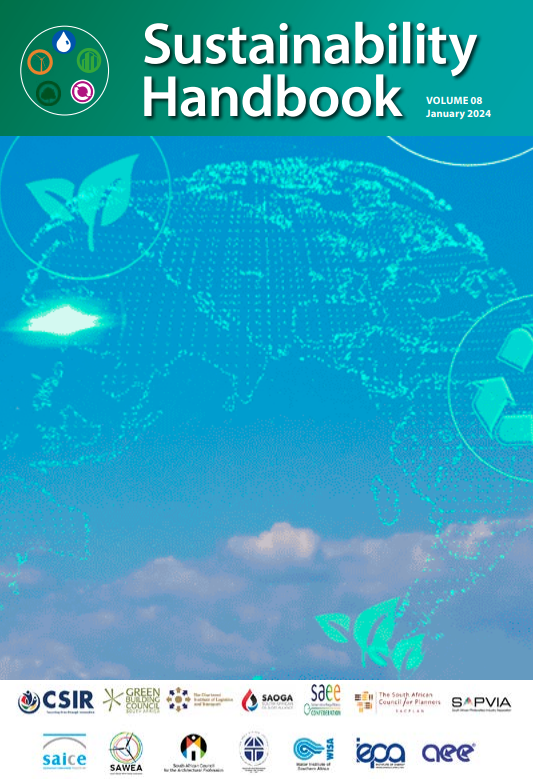Sustainability Handbook Vol 8

01 January 2024
Peta de Jager
English
Guide/ Handbook
Council for Scientific and Industrial Research
Africa
Sustainability Handbook Volume 8 focuses on the critical role of materials science in addressing environmental concerns associated with cement production, the third most utilised material globally. The volume acknowledges the significant carbon dioxide emissions linked to cement manufacture and emphasises the need to evaluate recyclability, life cycle environmental impact, and economic feasibility. Researchers and industry professionals contribute to the volume by exploring technologies aimed at mitigating the negative environmental effects of cement production. Geopolymers, as a cementitious material, are examined for their potential to enhance concrete durability, particularly in infrastructure applications. Collaborative efforts between the University of Cape Town (UCT) and the Council for Scientific and Industrial Research (CSIR) involve testing mineral acid resistance for various applications, including sewer systems.
A substantial portion of the Sustainability Handbook Volume 8 delves into innovative solutions within materials science, presenting a cradle-to-gate environmental life cycle assessment of limestone calcined clay cement (LC3). This alternative to Ordinary Portland Cement is identified as promising in terms of environmental impact reduction.
Additionally, the volume discusses sustainable concrete mixes, exploring the potential of replacing cement with fly ash to decrease environmental impacts without compromising strength. Circular economy principles are highlighted through the implementation of waste materials, such as polyolefin plastic waste, in road construction materials.
The volume also touches on energy-related challenges and opportunities, including the application of platinum-based high-entropy alloy nanocatalysts for green energy production and storage. Furthermore, it addresses nuclear energy perceptions, advocating for the use of molten salt for heat storage based on over three decades of nuclear energy experience.
Abstract based directly on source.


Comments